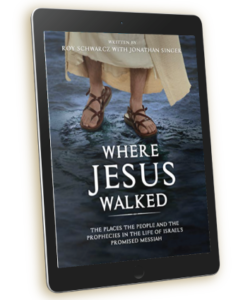Exodus 24:1-2 The first two verses connect with 20:21, when God called Moses to ascend Mt. Sinai and bring with him the seventy elders, Aaron, and Aaron’s sons Nadab and Abihu. This chapter involves the confirming of the Covenant. In the previous chapters God recounted how he had saved them out of Egypt. This was to remind them that they owed him their very lives and their obedience. A covenant is a sacred relationship, established by God, in which God gives Himself to his people and his people belong to him.
Moses then wrote down all that God had said, which means the Ten Commandments and the Book of the Covenant. All covenants with God involve the shedding of blood, we see this beginning with God’s provision for Adam’s sin in Exodus 3 and in His covenant with Abraham in Gen. 15, and now here. The promise of the Lord in Exodus 6:6-8 was now entering its third phase. The first was where God redeemed His people (Ch. 1-18) and the second was when He took them to be His people (Ch. 19-24); this would be the third where He would dwell among them through the tabernacle (Ex. 25-40). Aaron and his two sons represented the priests, and the seventy elders represented the rest of Israel. The seventy were likely the men chosen in chapter 18 when Moses appointed elders representing the tribes to help him govern Israel.
Exodus 24:3-4 At this point the people were united in their agreement to keep the covenant which they did with some exceptions under Moses and Joshua (Josh 24:31). However, after that they only kept it sporadically. Covenants must be reaffirmed through renewal commitments in each subsequent generation. Each generation were to be instructed in the covenant as fully as their parents had been. Foreigners were welcome but they too needed to learn God’s Law in order for them to be fully integrated into the covenant. Judges needed to be fully familiar with the covenant stipulations to decide difficult cases in alignment with God’s Law. Regular reading and rereading of the written covenant helped keep the covenant alive in the minds of the people. It would help to remind them of their relationship to the one true God. Moses carried out actions appropriate to make the covenant official. Five elements focus on their new relationship with God: an altar, twelve stone pillars, animal sacrifices, the application of blood, and the reading of the covenant. The altar is reflected in the teaching of Exod. 20:24–26 on proper worship. This involved the slaughtering and cooking of the meat based on the principle of substitutionary atonement (The exchange of life principle, for me to live, something must die in my place). The twelve stone pillars represented the tribes of Israel. This was a picture of the nation who were committing themselves to keep the covenant as a reminder of The Lord’s covenant with his people.
Exodus 24:5-6 The “young men” sent to offer the sacrifices were not necessarily priests, since the priesthood at this point was the family of Aaron. They likely worked under the supervision of Aaron and his sons. “Burnt offerings” are offerings dedicated entirely to God while “Fellowship offerings” were offerings eaten by both the priests and the worshipers alike. The portion of “blood” (v. 6) that Moses put in “bowls” was for sprinkling on the people, as a sign of the blessings of the shed blood. The portion sprinkled on the altar was demonstrating that God was the other party to the covenant. This was represented in the ceremony of sacrifice by his altar. This procedure helped Israel keep in mind the source and nature of their forgiveness and acceptance by God (Lev. 17:11).
Exodus 24:7-8 This reading of the “Book of the Covenant” by Moses preceded the covenant ceremony at the foot of Mt. Sinai (Horeb). They knew the Giver of the covenant was The Lord (“We will do everything the LORD has said”); they were entering into a marriage relationship with God as their husband (Jer. 31:31-33). The sprinkled blood symbolized their being parties to the covenant (“This is the blood of the covenant”). “All these words” emphasize that Israel was bound to keep all not just part of it.
Exodus 24:9-11 Seventy-four people ascended Mount Sinai and represented all Israel in the covenant meal. Eating in the Ancient Near East (ANE) expressed acceptance and approval of the parties dining together. This was part of the scandal of Yeshua’s dining with tax collectors and assorted “sinners” and was deemed to be an act of approval of their behavior (Matt 9:10–11; 11:19; Mark 2:15–16; Luke 5:30; 15:2). We don’t know what exactly they saw of the God of Israel. They saw that “Under his feet was something like a pavement made of sapphire, clear as the sky itself” which is consistent with other visions of God (Ezek. 1:26–28; Amos 7:7; Exod. 33:23). No one is reported in Scripture as actually seeing God fully, but only something of a shape that God allowed to be recognized. That God “did not lay his hand on the chief men of the people of Israel” (v. 11) reflects the idea that to see God would be to die. God showed himself, even though it was vaguely and partially, so that they would understand that he was a willing party to his covenant with them and their eating and drinking in His presence indicated His partaking with them of the covenant meal. At Yeshua’s last Passover he mentions a future covenant meal with His disciples in the Kingdom.
Exodus 24:12-14 Moses is called up again accompanied by Joshua for a lengthy stay on the mountain (v. 18) to receive God’s written guidelines for Israel’s relationship with him. This stay continued through the events described in 32:1–16. Here he receives the stone tablets that God himself wrote on. Moses handed his court duties temporarily to Aaron and Hur in his absence.
Exodus 24:15-18 The cloud on Mount Sinai represented God’s glory and was similar to the cloud that led Israel in the wilderness by day and the pillar of fire by night (13:21-22; 14:19-20,24). The cloud had served as a protection and guide for Israel as they came out of Egypt and was led through the wilderness. It represented God’s glorious presence and protection for His covenant people. The cloud here indicates God’s invitation to Moses to enter his presence. The cloud was an indication of the glory that represented God at Mount Sinai. To Israel observing from down below we are told in v 17 that it was “the appearance of the glory of the Lord like a devouring fire on the top of the mountain in the sight of the people.” It may have appeared to be as a volcanic mountain but nothing in the text says that it was, it was the presence of God that gave it the appearance of something volcanic. Moses was sustained by the Lord for the forty days he was on the mountain by God as confirmed in Deut. 9:9.


